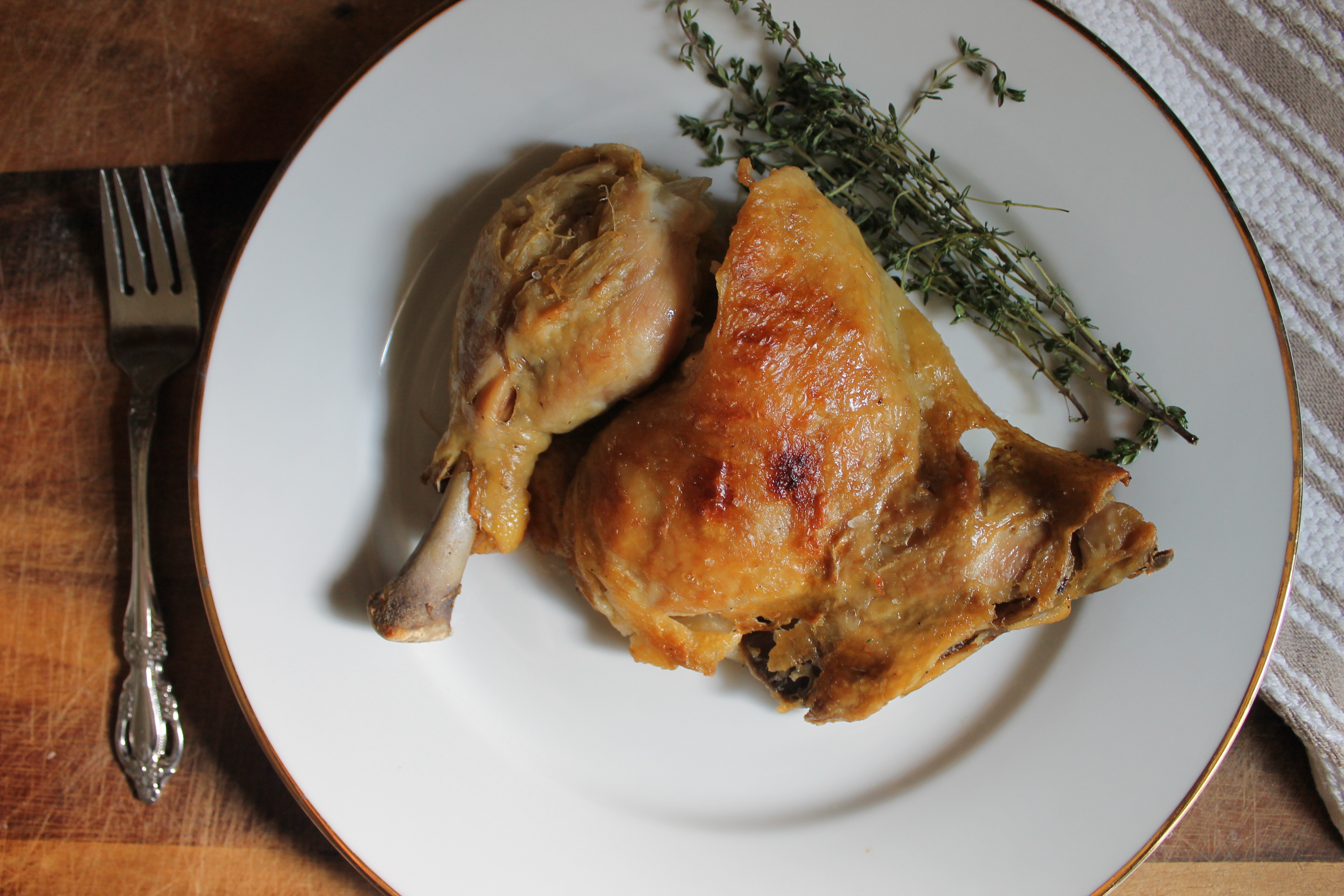 Today we offer yet another French-inspired adaptation, courtesy of the one and only Emeril Lagasse. This centuries old preserving technique of cooking meat in rendered fat was actually “rendered” obsolete by the invention of refrigeration (see what we did there?), but it has held on as a favored cooking method because it yields such divine flavor and tenderness. It doesn’t hurt that the finished product lasts well beyond a normal “sell by” scenario, so while it is a time-consuming process, it pays off with a much longer shelf life—so long as that shelf is in a cool, dark place. Just brace yourself, because this recipe takes “low and slow” to a whole new level.
Today we offer yet another French-inspired adaptation, courtesy of the one and only Emeril Lagasse. This centuries old preserving technique of cooking meat in rendered fat was actually “rendered” obsolete by the invention of refrigeration (see what we did there?), but it has held on as a favored cooking method because it yields such divine flavor and tenderness. It doesn’t hurt that the finished product lasts well beyond a normal “sell by” scenario, so while it is a time-consuming process, it pays off with a much longer shelf life—so long as that shelf is in a cool, dark place. Just brace yourself, because this recipe takes “low and slow” to a whole new level.
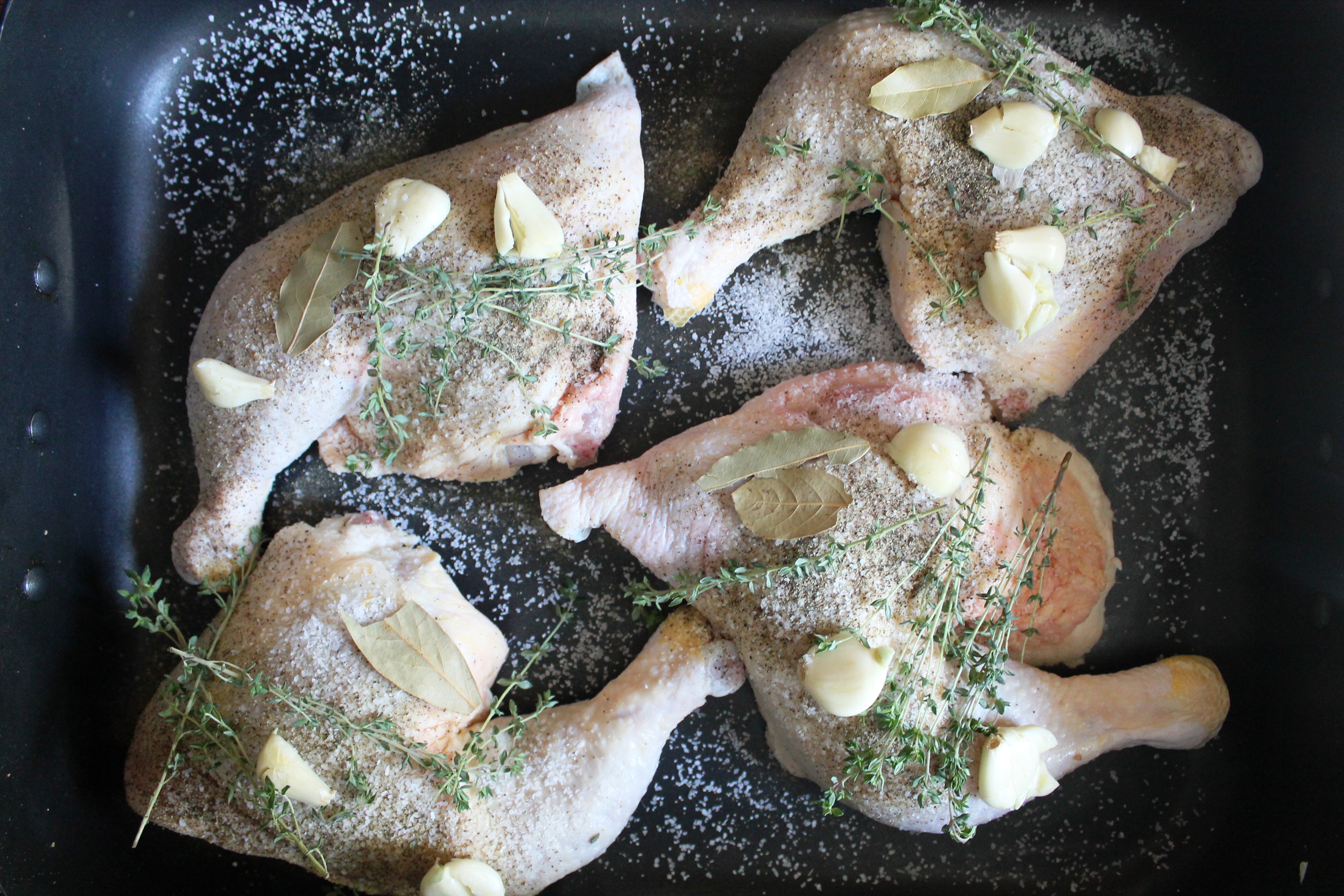 The basic process involves dry brining—chicken leg quarters in this case—in salt and herbs for up to a day, then submerging the meat in oil and/or fat and roasting it on low for up to 12 hours. Of course, we wouldn’t be us if we didn’t take liberties. The thought of running the oven all day (or night) just wasn’t very appealing, so instead of the traditional 200º, the temperature got bumped up to 250º and the cook time subsequently dropped to 3 1/2 hours. Still a commitment, but much more manageable. As mentioned before, this takes a lot of time. Between the dry brine, slow roast and cooling, you’re potentially looking at 3-4 days, but it’s largely hands-off and sooo worth it.
The basic process involves dry brining—chicken leg quarters in this case—in salt and herbs for up to a day, then submerging the meat in oil and/or fat and roasting it on low for up to 12 hours. Of course, we wouldn’t be us if we didn’t take liberties. The thought of running the oven all day (or night) just wasn’t very appealing, so instead of the traditional 200º, the temperature got bumped up to 250º and the cook time subsequently dropped to 3 1/2 hours. Still a commitment, but much more manageable. As mentioned before, this takes a lot of time. Between the dry brine, slow roast and cooling, you’re potentially looking at 3-4 days, but it’s largely hands-off and sooo worth it.
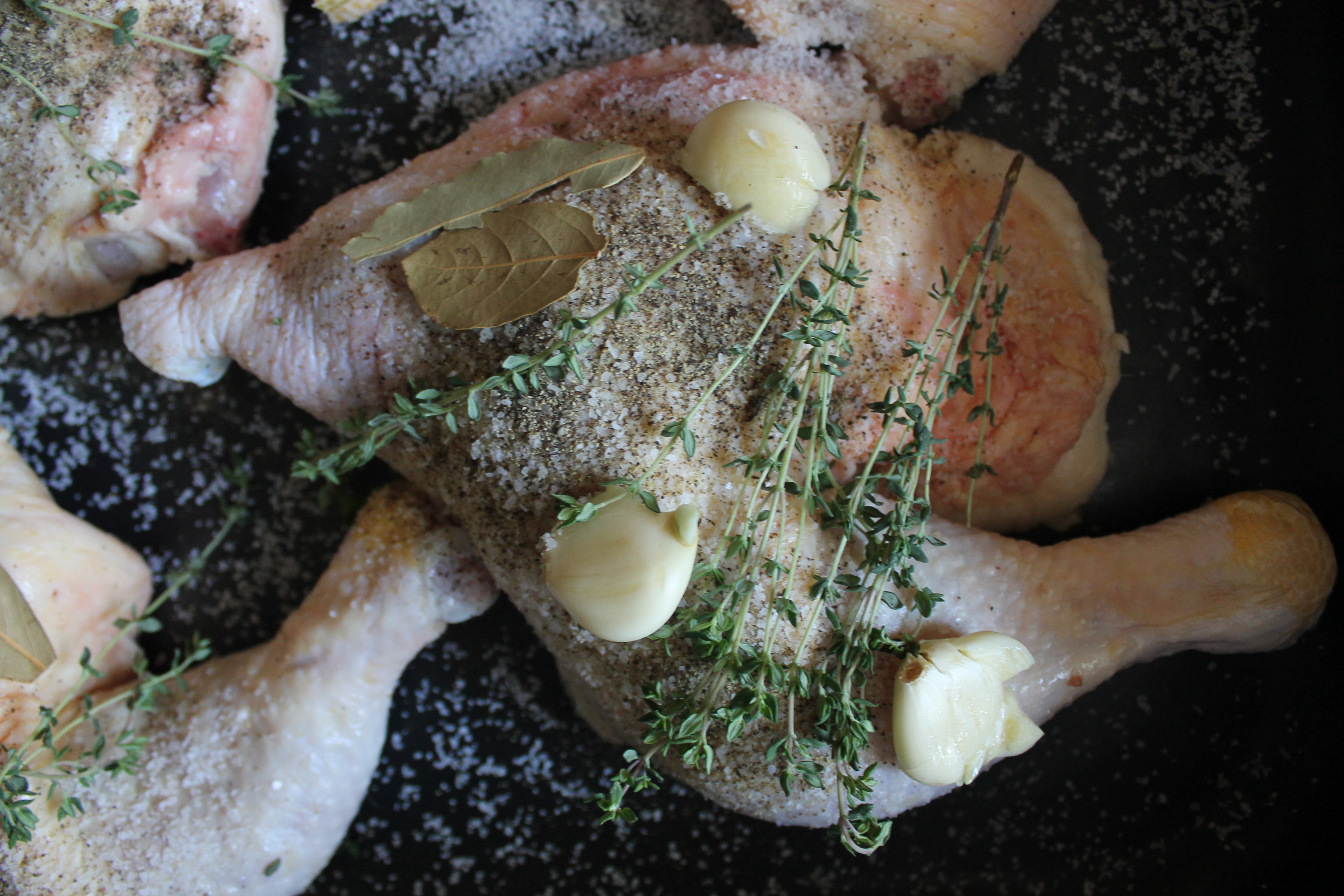 The reason it cooks and stores so well is that oil and other fats are inhospitable environments for bacteria, so provided you utilize safe food handling techniques, you and the chicken are good to go. (We know this is boring, blah-blah-blah stuff, but food poisoning is no joke, so be safe.) The really lovely thing about this technique is that the oil bath acts as sort of a low-tech sous vide, regulating the cooking temperature and keeping the chicken from getting overdone. Even with the higher temperature and shorter cooking time, you still end up with the most tender, luscious, fall-off-the-bone chicken you can imagine. And the flavor is really top notch. (Editors note: You have to say “top notch” with your teeth clenched, so that you sound like the food snob you’re bound to become after tasting this dish.)
The reason it cooks and stores so well is that oil and other fats are inhospitable environments for bacteria, so provided you utilize safe food handling techniques, you and the chicken are good to go. (We know this is boring, blah-blah-blah stuff, but food poisoning is no joke, so be safe.) The really lovely thing about this technique is that the oil bath acts as sort of a low-tech sous vide, regulating the cooking temperature and keeping the chicken from getting overdone. Even with the higher temperature and shorter cooking time, you still end up with the most tender, luscious, fall-off-the-bone chicken you can imagine. And the flavor is really top notch. (Editors note: You have to say “top notch” with your teeth clenched, so that you sound like the food snob you’re bound to become after tasting this dish.)
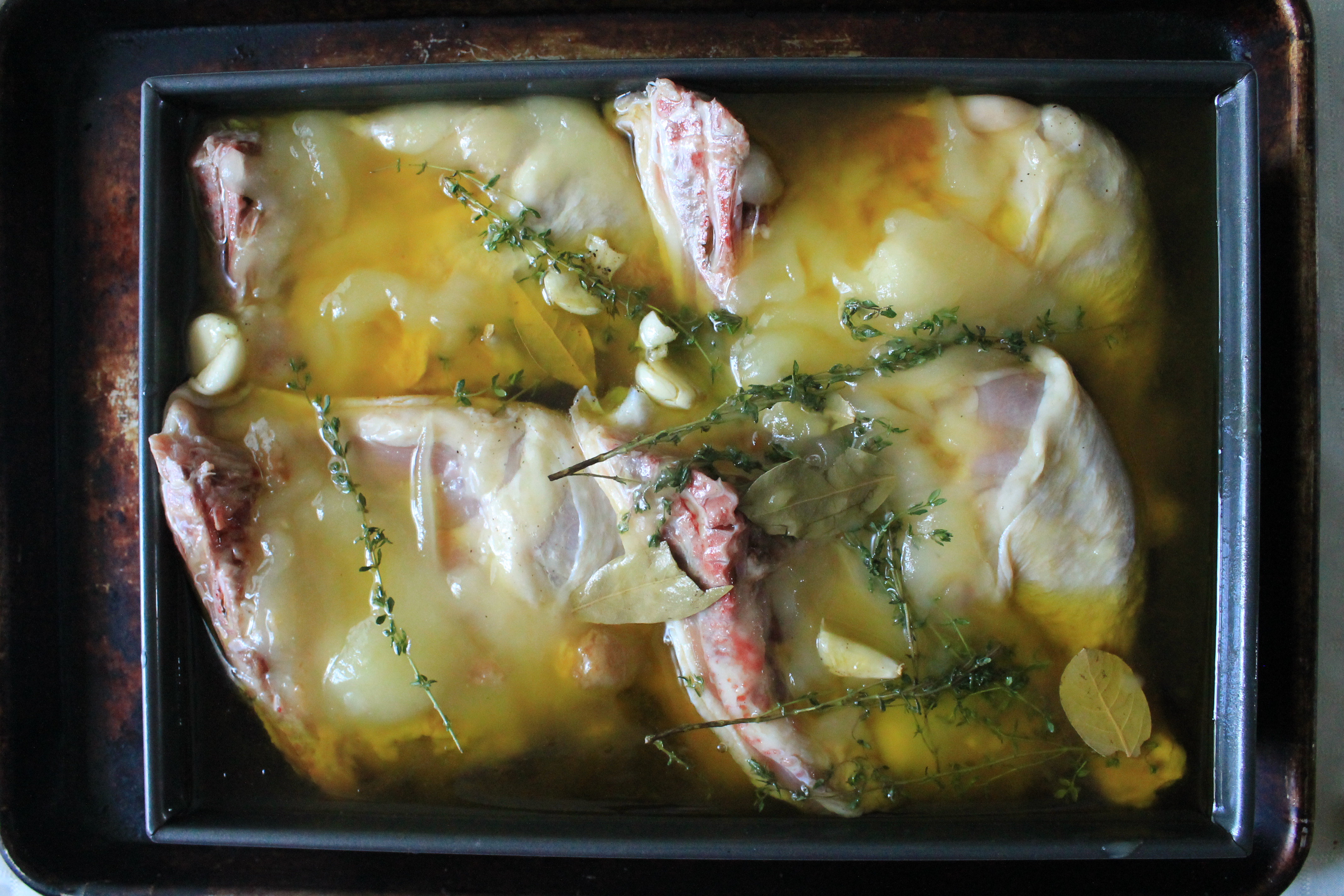 This version utilizes a little jarred duck fat to preserve at least some of the historical authenticity of the dish, but it can be a little pricey, so no one will blame or judge you for skipping it. You can substitute just about any other rendered fat (*cough*bacon) you have on hand, or just simply use more oil. You’ll get the same sublime result, minus the flavor note imparted by the duck fat. Once the meat is fully cooked, you can remove the skin and shred the chicken for use in soups, salads, casseroles, sandwiches, or even cassoulets. Any leftovers can be jarred and topped off with the cooking fat. Any remaining cooking fat can be stored in a jar and used for other cooking projects. It makes mind-blowing roasted vegetable and potatoes. You might want to master this technique for that reason alone. Seriously, they’re that good.
This version utilizes a little jarred duck fat to preserve at least some of the historical authenticity of the dish, but it can be a little pricey, so no one will blame or judge you for skipping it. You can substitute just about any other rendered fat (*cough*bacon) you have on hand, or just simply use more oil. You’ll get the same sublime result, minus the flavor note imparted by the duck fat. Once the meat is fully cooked, you can remove the skin and shred the chicken for use in soups, salads, casseroles, sandwiches, or even cassoulets. Any leftovers can be jarred and topped off with the cooking fat. Any remaining cooking fat can be stored in a jar and used for other cooking projects. It makes mind-blowing roasted vegetable and potatoes. You might want to master this technique for that reason alone. Seriously, they’re that good.
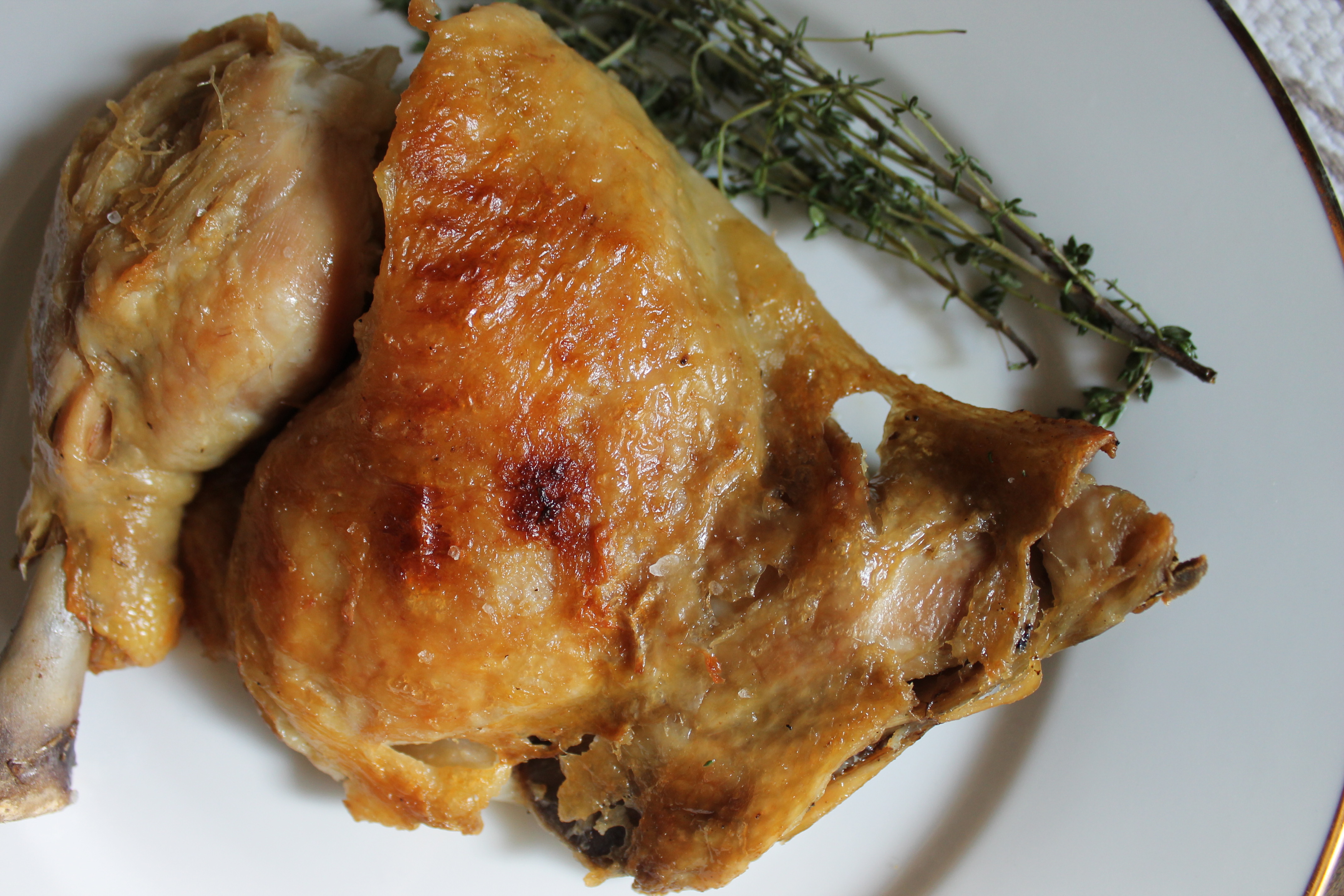 For this recipe, we opted to leave the leg quarters whole, putting them under the broiler and crisping the skin. It got a garnish of thyme sprigs and some Apple Bacon Jam, for an oh so delectable dinner. The combination of the crispy skin, smoky-sweet jam, and the glistening dark meat made for a classic, rustic meal. Pair it with a glass (or four) of hearty red wine–such as a pinot noir or a spicy zinfandel–and don’t be surprised if, after a bite or two, you spontaneously shout Emeril’s trademark “BAM!” We’ll totally understand. Enjoy!
For this recipe, we opted to leave the leg quarters whole, putting them under the broiler and crisping the skin. It got a garnish of thyme sprigs and some Apple Bacon Jam, for an oh so delectable dinner. The combination of the crispy skin, smoky-sweet jam, and the glistening dark meat made for a classic, rustic meal. Pair it with a glass (or four) of hearty red wine–such as a pinot noir or a spicy zinfandel–and don’t be surprised if, after a bite or two, you spontaneously shout Emeril’s trademark “BAM!” We’ll totally understand. Enjoy!
Adapted from Emeril Lagasse.
- 4 large chicken leg quarters, about 5 pounds total
- 2 tablespoons kosher salt
- ½ teaspoon freshly ground black pepper
- 10 garlic cloves, peeled and smashed
- 4 bay leaves
- 8 - 10 thyme sprigs
- 1 11- ounce jar duck fat (optional)
- 4 cups extra olive oil
- Lay the leg portions on a platter or baking sheet, skin side up. Sprinkle with 2 tablespoons of the kosher salt and black pepper. Place the garlic cloves, bay leaves, and sprigs of thyme on the leg portions.Cover and refrigerate for 12 - 24 hours.
- Preheat the oven to 250 degrees F.
- Remove the chicken from the refrigerator. Remove the garlic, bay leaves, thyme, and chicken fat and reserve. Rinse the chicken with cool water, rubbing off some of the salt and pepper. Pat dry with paper towels.
- Put the reserved garlic, bay leaves, and thyme in the bottom of an enameled cast iron pot or roasting pan. Lay the chicken on top, skin side down. If using, spread the duck fat evenly over the chicken leg portions. Add the olive oil. Cover and bake for 3 /12 to 4 hours, or until the meat pulls away from the bone. Cool to room temperature.
- Remove the chicken from the fat. Strain the fat and reserve. If preserving, pick the meat from the bones and place it in a stoneware container. Cover the meat with some of the strained fat so that there is a ¼-inch layer of fat on top. The chicken confit can be stored in the refrigerator for up to 1 month. Alternatively, if you wish to serve the chicken confit immediately (no one could blame you), remove chicken from the oil/fat and heat under the broiler for 4 -5 minutes, until skin is browned and crisp.
- The excess oil can be stored in an airtight container in the refrigerator and used like butter for cooking.
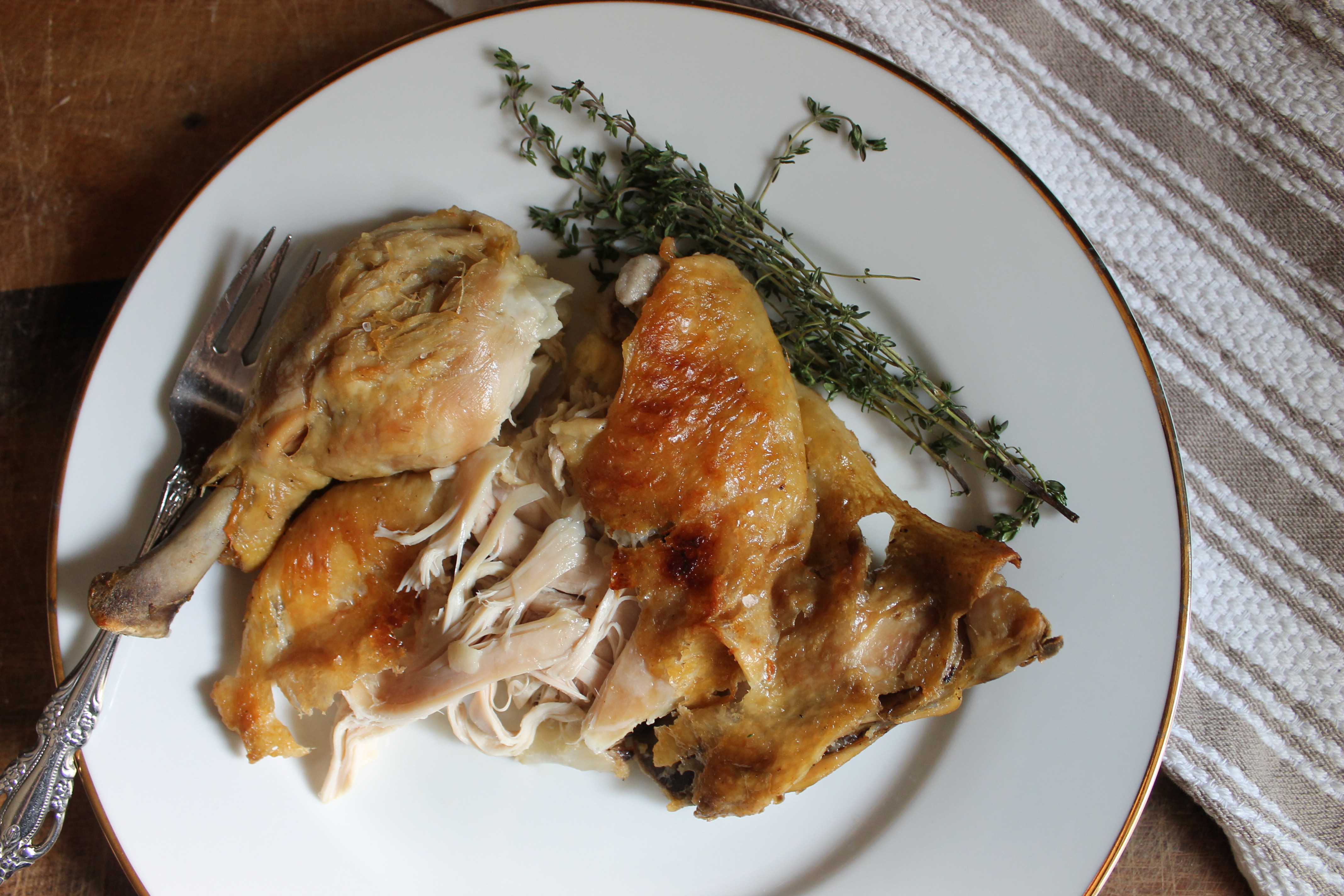
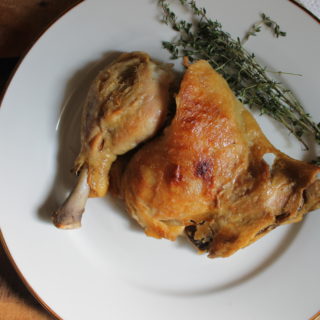

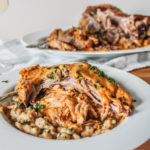


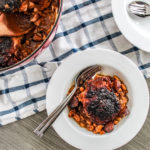

Leave a Reply